.
Fortsetzung:
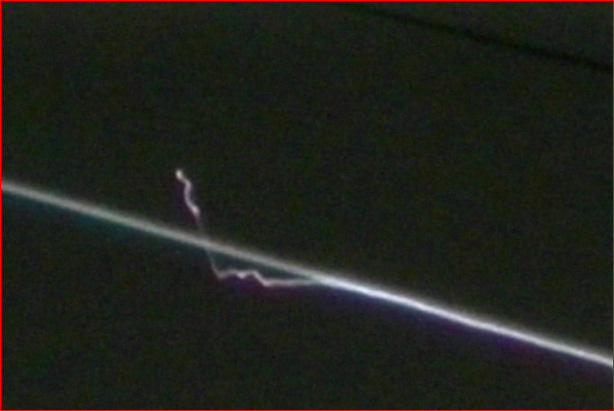
Subject: Columbia 5th Anniversary -- Mystery of the Purple Lightning Zig-Zag Photo
Date: Thursday, January 10, 2008 3:10 PM // Jim Oberg news media client advisory:
1. One angle on the fifth anniversary of 'Columbia' is the festering controversy over the
famous 'lightning bolt strikes shuttle' photograph that has been all over cable TV and the
Internet as 'the secret cause of the Columbia crash.'
2. The pictures, taken by an amateur astronomer named Goldie and loaned to NASA,
remain copyrighted by him, so only pirated copies are on the internet. Here's the main
one: http://energia.sl.pl/shuttle/ufo_attacks_columbia.jpg or
http://i40.photobucket.com/albums/e229/shuffle23/The_Other/ufo_attacks_columbia.jpg
A drawing of the image is here:
http://members.fortunecity.com/timevehicle/shuttle/ufo_after_columbia.jpg
3. The purple zig-zag sure does look weird, and in the early post-disaster days, all leads
were followed up. An excellent newspaper account is at
http://sfgate.com/cgi-bin/article.cgi?f=/c/a/2003/02/11/MN150539.DTL
4. Both NASA and independent photoanalysts quickly realized the zig-zag was just the
initial shaking of the camera on its tripod as the photographer triggered the start of the
time exposure.
5. But it sure doesn't LOOK that way, and a lot of folks -- who did not understand what a
shuttle entry fireball really looks like – were genuinely puzzled.
6. Suggestion: It shouldn't take much effort to reproduce the visual and mechanical
conditions under which these images were made, to demonstrate to those still wondering
about -- and those strenuously rejecting -- the 'official answer'.
7. Here's the missing visual clue: the flaring fireball of plasma around the shuttle itself
leaves a milky-white glowing trail behind it, a trail that persists and slightly widens over
the next 30-60 seconds as the shuttle passes over head.
8. I've seen it myself, maybe 8-9 times from Texas, when Florida-bound shuttles cross
our clear (sometimes), dark skies (it's too dim to show up against a bright sunlit sky).
9. So even an instant photo of an entering shuttle would show a long white trail off
behind it.
10. Add in a time exposure, where the entire tail gets to burn its way onto the optics and
the actual fireball is just a dot that dances briefly, then follows the well-marked trail
down its center, and you have a formula to generate an image that looks exactly like the
ones that Goldie took.
11. After each exposure, he moves the camera on its tripod and trips the start button
again, recreating the same phenomenon each time to greater or lesser degrees.
12. Several years later, a TV documentary called 'Megalightning' (David Monaghan
Productions/HTV West, National Geographic Channel, 9-12-2004) discussed the
possibility the zig-zag was such a bizarre phenomenon (transcript at
http://www.dmptv.co.uk/pro/mega/index.htm). They gave a pretty good history of the
puzzle and concluded that the jiggled camera was the explanation.
13. Now, do a google on 'shuttle columbia shot down' and look at the thousands of hits.
Read some of them! Bizarro!
14. Some of the looniest stuff has (as usual) been on YouTube, where a self-promoting
UFO nut named David Sereda (yes, he has a blog, and sells videotapes) describes how it
was a death ray from the aliens:
http://www.youtube.com/watch?v=lI5iGN132P8#PU6R1R6SrME
What's scary is to read the comments posted by viewers who swallow the idea -- they
sound like a legion of Ron Paul and Dennis Kucinich volunteers.
15. Here's some further details about how shuttle fireballs really look:
Images of shuttle fireball trail:
http://icons.wunderground.com/data/wximagenew/w/Westerberg/154.jpg
http://www.eclipsetours.com/sat/sts931.jpg (NOT a time exposure – trail is persistent)
Entire section on Columbia entry imaging… http://www.eclipsetours.com/sat
Discussion of physics of the persistent trail http://www.eclipsetours.com/sat/shuttle.html
16. Here's a detailed description from Dr. David R. Bretz, 'Principal Imaging Scientist' at
the NASA Johnson Space Center in Houston, in a report he wrote in 2005:
17. "The purplish color was typical of the glow seen around the moving orbiter, while the
greenish color was typical of the luminous trail left in the wake which lasted for a longer
period and did not drift quickly. In this picture, the shutter was opened after the orbiter
was already within the frame, not before it entered. So the purple wiggle is the orbiter
during the bump and the continuous green streak behind it is not from the orbiter itself,
but from the trail.
18: "Once the bump was over, the orbiter and trail filled in the line. The observer stated
he had no cable-release to prevent the wiggle of the camera at the shutter depress.
19. "This was only one of several photos which were submitted with a similar purple
wiggle caused by the orbiter itself and an unsteady tripod.
20: "When I was first shown this picture, I too was tempted to think the purple wiggle
was extraneous to the orbiter until I realized the orbiter did not begin off the frame."
21: "If this were a picture of a nominal re-entry, the image would look the same. The
colors are typical based on a review of video taken of STS-109 re-entry over Houston."
Bretz, END.
Fotostrecke Columbia:
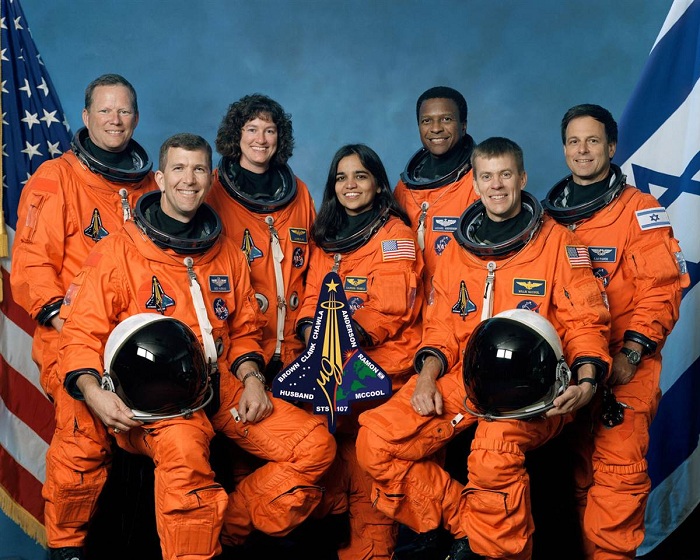
Columbia's fallen crew
The space shuttle Columbia's crew members pose for a group photo. From left, front row: commander Rick Husband, Kalpana Chawla, pilot William McCool. Back row: David Brown, Laurel Clark, Michael Anderson and Israeli astronaut Ilan Ramon.
Columbia was destroyed on Feb. 1, 2003, during its return to Earth, because of a hole in its wing that allowed in super-hot atmospheric gases.
-
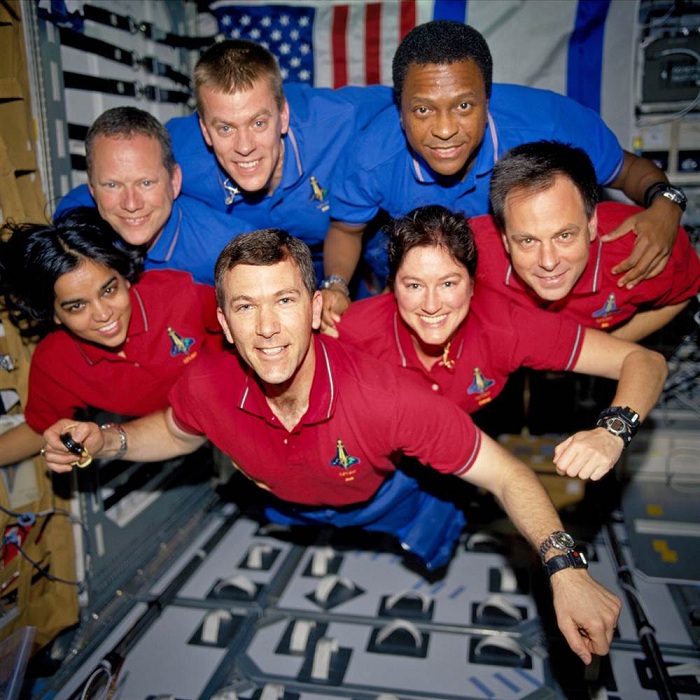
Recovered from the debris
This picture of Columbia's crew members was on a roll of unprocessed film recovered from the debris after the shuttle's disintegration. The crew members strike a "flying" pose for their traditional in-flight crew portrait in the Spacehab research module. From left (bottom row), wearing red shirts to signify their shift’s color, are Kalpana Chawla, commander Rick Husband, Laurel Clark and Ilan Ramon. From left (top row), wearing blue shirts, are David Brown, William McCool and Michael Anderson.
-
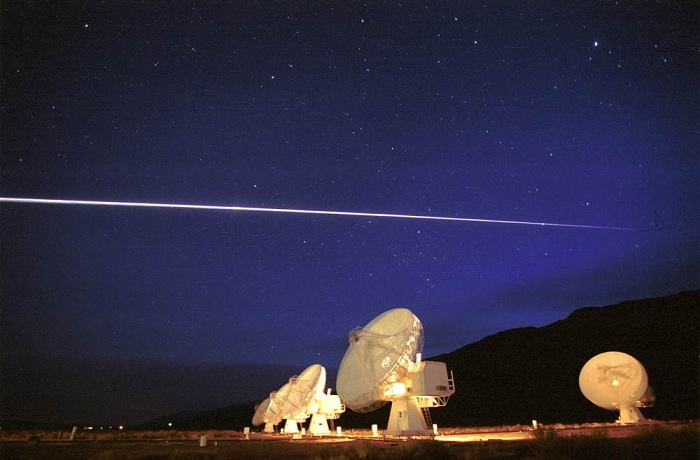
Prelude to disaster
The space shuttle Columbia passes over the Owens Valley Radio Observatory north of Bishop, Calif., at 5:54 a.m. PST on Feb. 1, 2003. The camera is pointed north, and the shuttle is passing from west to east, from the left to the right side of the photo. Minutes after this picture was taken, the shuttle broke apart over Texas, killing all seven astronauts.
-
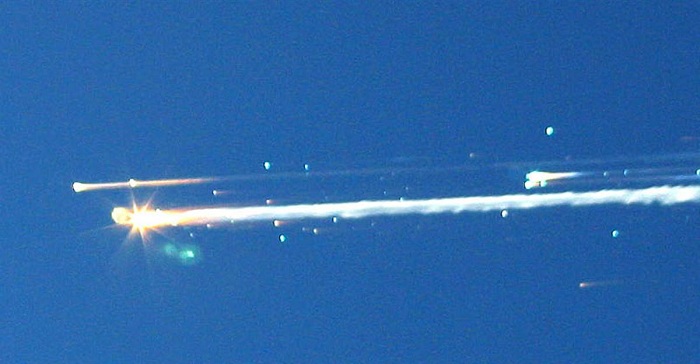
Tragedy strikes
Debris from the space shuttle Columbia streaks across the sky over Tyler, Texas, on Feb. 1, 2003. Columbia broke apart in flames 200,000 feet over Texas, killing the crew just minutes before they were to glide to a landing in Florida.
-
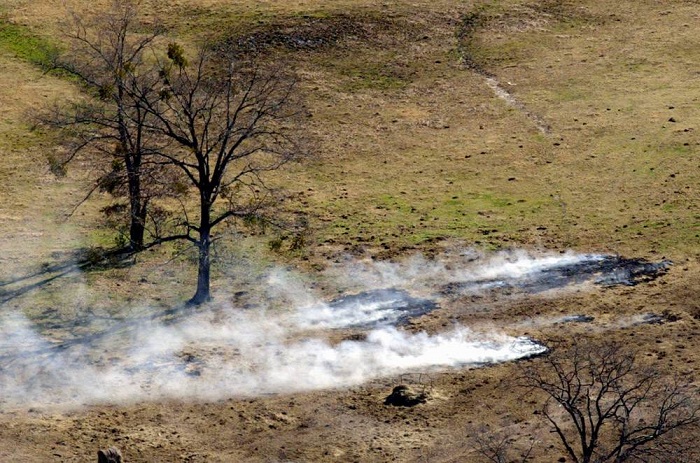
Trail of debris
Smoke rises from a small brush fire started by a falling piece of debris from the space shuttle Columbia outside Athens, Texas. Thousands of pieces fell to Earth after the shuttle broke apart in the skies over Texas on Feb. 1, 2003.
-
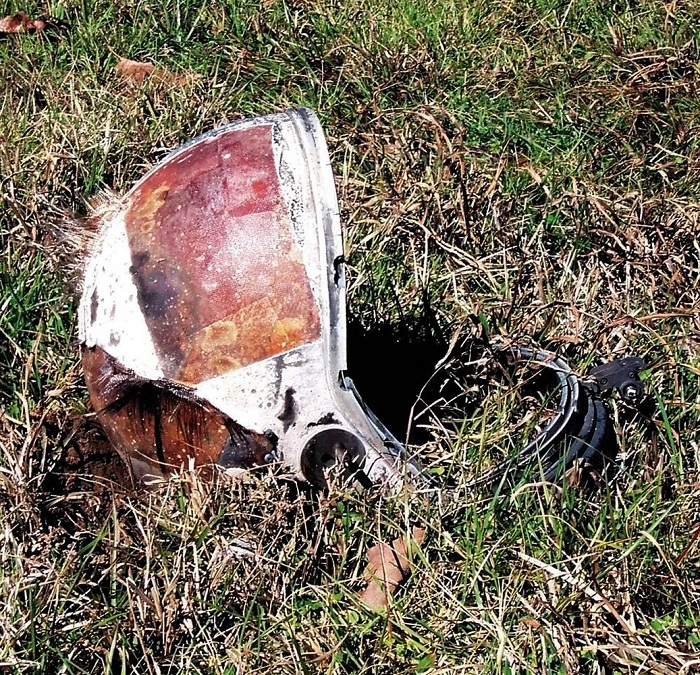
Grim evidence
A helmet, believed to have come from the space shuttle Columbia, lies in a field near Lufkin, Texas, on Feb. 2, 2003.
-

Reconstructing the Columbia
In the RLV Hangar at Kennedy Space Center in Florida, the floor grid is dotted with pieces of Columbia debris on March 13, 2003. The Columbia Reconstruction Project Team arranged the recovered pieces of the orbiter as part of the investigation into the accident that caused the destruction of Columbia and the loss of its crew.
-
Quelle: NASA
